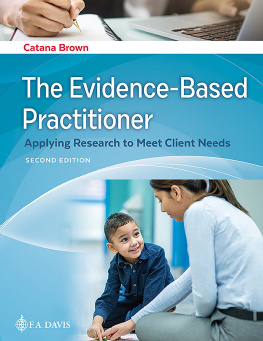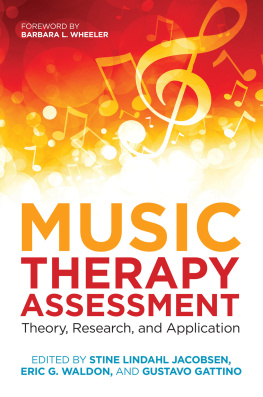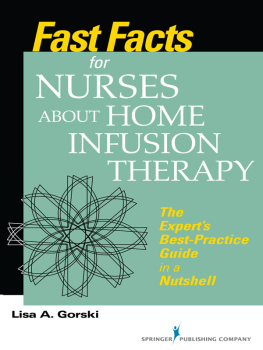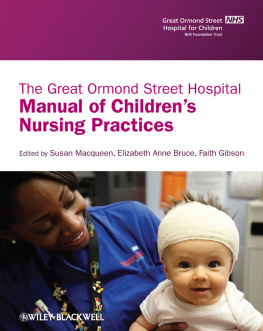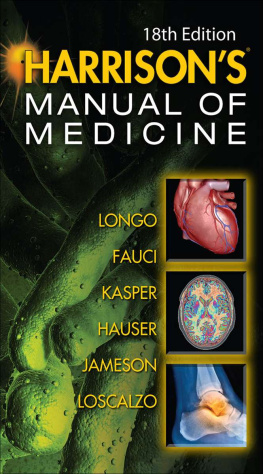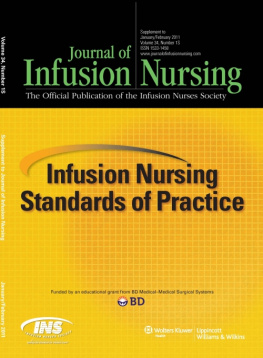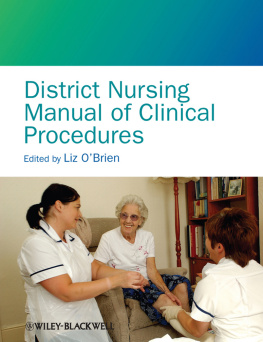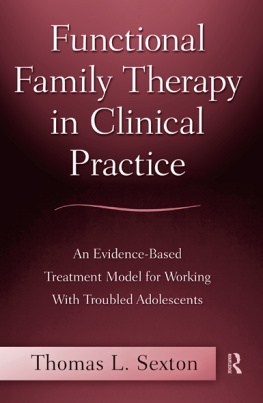Lisa Gorski - Phillipss Manual of I.V. Therapeutics Evidence-Based Practice for Infusion Therapy
Here you can read online Lisa Gorski - Phillipss Manual of I.V. Therapeutics Evidence-Based Practice for Infusion Therapy full text of the book (entire story) in english for free. Download pdf and epub, get meaning, cover and reviews about this ebook. City: Philadelphia, year: 2022, publisher: F.A. Davis Company, genre: Science. Description of the work, (preface) as well as reviews are available. Best literature library LitArk.com created for fans of good reading and offers a wide selection of genres:
Romance novel
Science fiction
Adventure
Detective
Science
History
Home and family
Prose
Art
Politics
Computer
Non-fiction
Religion
Business
Children
Humor
Choose a favorite category and find really read worthwhile books. Enjoy immersion in the world of imagination, feel the emotions of the characters or learn something new for yourself, make an fascinating discovery.
- Book:Phillipss Manual of I.V. Therapeutics Evidence-Based Practice for Infusion Therapy
- Author:
- Publisher:F.A. Davis Company
- Genre:
- Year:2022
- City:Philadelphia
- Rating:5 / 5
- Favourites:Add to favourites
- Your mark:
Phillipss Manual of I.V. Therapeutics Evidence-Based Practice for Infusion Therapy: summary, description and annotation
We offer to read an annotation, description, summary or preface (depends on what the author of the book "Phillipss Manual of I.V. Therapeutics Evidence-Based Practice for Infusion Therapy" wrote himself). If you haven't found the necessary information about the book — write in the comments, we will try to find it.
The perfect resource for any setting where infusion therapy skills are required! Its popular, self-paced approach makes it ideal for classroom and clinical settings as it progresses from the basics to advanced techniques while incorporating theory into clinical application.
A focus on evidence-based practice in a streamlined format continues to make this the manual of choice in a rapidly advancing field.
Thorough, comprehensive manual on IV therapeutics.Gorski, the author, is considered the final word in all matters of IV therapeutics. A great go-to guide for any nurse involved with infusions.Andrea, Online Reviewer
- New & Updated Incorporates the 2021 Infusion Therapy Standards of Practice published by the Infusion Nurses Society (INS), new and revised guidelines from the Centers for Disease Control (CDC) and World Health Organization (WHO) as well as the latest guidelines from the Association for the Advancement of Blood & Biotherapies (AABB) and the American Society of Parenteral and Enteral Nutrition (ASPEN)
- New Chapter!An Introduction to Biologic Infusion Therapies
- Updated! Follows the INS Core Curriculum for certification.
- Updated! Uses current literature to support evidence-based practice.
- Updated! Presents procedures and rationales as well as technology that reflect practice today.
- Presents Thinking Critically boxes, a case study feature.
- Integrates pediatric and geriatric content throughout.
- Offers a wealth of additional resources for students online at FADavis.com
- Features well organized pedagogical tools, includingLearning Objectives, Nursing Fast Facts, Age-related and Cultural Considerations, Nursing Plans of Care, Home Care Issues, Patient Education, Key Points, and Review Questions.
- Makes must-know information easy to find with icons for key points of theory, nursing fast facts, INS standards of practice, relevant studies in evidence-based practice, nursing points of care, home care issues, patient education, and a media link to the online tools and resources.
- Presents detailed step-by-step procedures for subcutaneous infusion of pain medication peripherally inserted catheters (PICCs) epidural pain medication administration and patient controlled analgesic therapy.
- Includes competency skill checklists for evaluating procedures.
- Examines delivery of IV therapy in the home setting.
- Highlights critical content in Nursing Fast Fact boxes,
- Spotlights assessment and intervention guidelines in Nursing Points-of-Care boxes.
- Provides competency criteria for hospital policy and procedure development required by The Joint Commission.
Lisa Gorski: author's other books
Who wrote Phillipss Manual of I.V. Therapeutics Evidence-Based Practice for Infusion Therapy? Find out the surname, the name of the author of the book and a list of all author's works by series.

